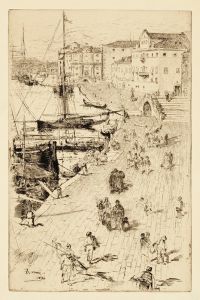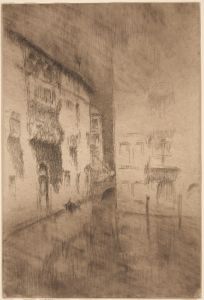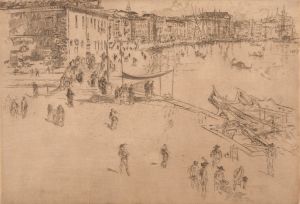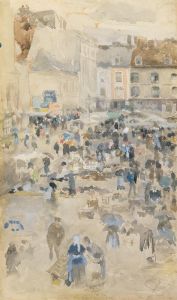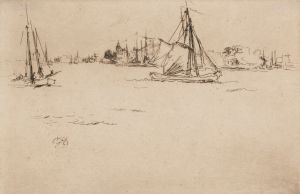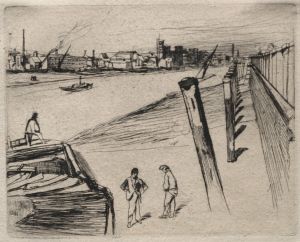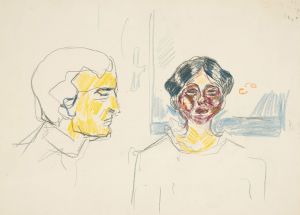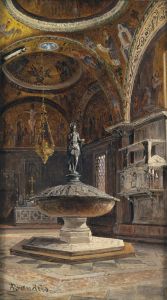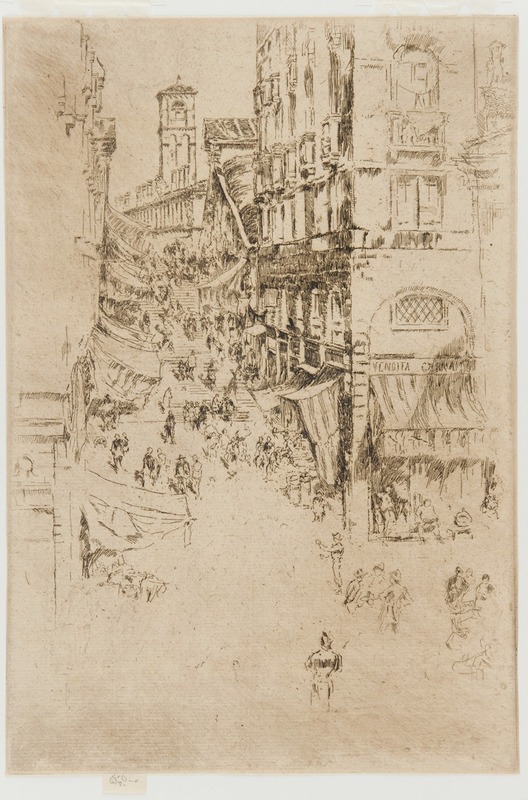
The Rialto
A hand-painted replica of James Abbott McNeill Whistler’s masterpiece The Rialto, meticulously crafted by professional artists to capture the true essence of the original. Each piece is created with museum-quality canvas and rare mineral pigments, carefully painted by experienced artists with delicate brushstrokes and rich, layered colors to perfectly recreate the texture of the original artwork. Unlike machine-printed reproductions, this hand-painted version brings the painting to life, infused with the artist’s emotions and skill in every stroke. Whether for personal collection or home decoration, it instantly elevates the artistic atmosphere of any space.
James Abbott McNeill Whistler's painting The Rialto is a work that reflects the artist's fascination with Venice, a city he visited in the late 19th century. Whistler, an American-born artist, is renowned for his contributions to the Aesthetic Movement and his focus on tonal harmony and atmospheric effects in his art. His time in Venice, from 1879 to 1880, was particularly productive and marked by the creation of numerous etchings, pastels, and paintings that captured the city's unique architecture and ambiance.
The Rialto depicts the iconic Rialto Bridge, one of Venice's most famous landmarks. The bridge, which spans the Grand Canal, has been a central feature of Venetian life and commerce for centuries. Whistler's interpretation of the scene is characteristic of his style, emphasizing mood and atmosphere over precise detail. The painting employs a subdued color palette and soft, fluid brushstrokes, creating a dreamlike quality that evokes the interplay of light and water in Venice.
This work is part of Whistler's broader Venetian series, which includes both paintings and etchings. These pieces were created during his stay in Venice, a period that followed a significant legal and financial setback in his career. Whistler had recently lost a libel lawsuit against art critic John Ruskin, which left him in financial difficulty. His time in Venice allowed him to refocus on his art and produce works that would later be celebrated for their innovation and beauty.
Whistler's Venetian works, including The Rialto, were well-received and helped to restore his reputation as an artist. They were exhibited in London and contributed to the growing appreciation of his approach to art, which prioritized aesthetic experience over narrative or historical accuracy. His ability to capture the essence of Venice through subtle tonal variations and atmospheric effects has been widely praised.
The exact location of The Rialto within Whistler's body of work and its current whereabouts are not definitively documented in publicly available sources. However, it remains an example of his mastery in portraying the interplay of light, water, and architecture, hallmarks of his Venetian period.
This painting exemplifies Whistler's philosophy of "art for art's sake," emphasizing beauty and emotional resonance over literal representation. Through works like The Rialto, Whistler has left a lasting legacy as one of the most influential artists of his time.





